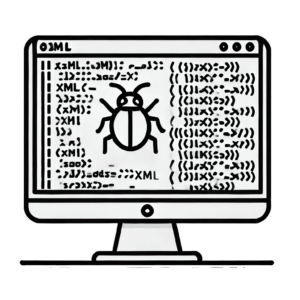Understanding XXE Vulnerabilities
XXE (XML External Entity) vulnerabilities are a common threat that can potentially compromise the security of web applications. By exploiting this vulnerability, hackers can manipulate XML input to access sensitive data, execute remote code, or carry out denial-of-service attacks. Understanding how XXE vulnerabilities work is crucial for effective web application penetration testing.
During a web application penetration test, it is essential to thoroughly assess how XML input is handled by the application. By injecting malicious entities into XML input fields, hackers can trick the application into processing external entities, leading to data leakage or system compromise. Proper validation of XML inputs and implementation of secure coding practices can help prevent XXE vulnerabilities.
Additionally, conducting thorough security evaluations and regularly checking for weaknesses in a system can help find and fix potential issues before they are taken advantage of by hackers. By staying aware of current security risks and taking steps to secure online platforms, businesses can improve their defenses and prevent unauthorized access to important information.
Implications of XXE Attacks
XXE (XML External Entity) attacks pose a significant threat to web applications, making them vulnerable to exploitation by malicious attackers. These attacks occur when an attacker injects malicious XML code into an application that processes XML input insecurely, leading to potential data theft, server-side request forgery, and denial of service attacks. The implications of XXE attacks can be severe, as sensitive information such as server credentials, user data, and configuration files can be exposed.
Web application penetration testing for XXE vulnerabilities is crucial in identifying and remedying these security flaws. By conducting thorough security assessments, penetration testers can pinpoint weak points in an application’s XML processing capabilities and recommend remediation strategies to mitigate the risk of XXE attacks. Implementing proper input validation, using secure XML parsers, and disabling external entity references are effective measures to prevent XXE vulnerabilities.
In conclusion, understanding the implications of XXE attacks and proactively addressing these vulnerabilities through web application penetration testing is essential in safeguarding sensitive data and ensuring the security of web applications against malicious exploitation.
Importance of Web Application Penetration Testing (WAPT)
Web Application Penetration Testing (WAPT) is crucial for identifying and mitigating XML External Entity vulnerabilities in web applications. XXE vulnerabilities can allow attackers to exploit the application’s processing of XML input and potentially access sensitive data or execute malicious code on the server. Conducting regular WAPT helps in uncovering these security weaknesses before they are leveraged by malicious actors.
By simulating real-world attack scenarios, professionals can assess the web application’s resilience against vulnerabilities and recommend adequate countermeasures to strengthen its security posture. Through comprehensive testing methodologies and tools, WAPT experts can pinpoint entry points where malicious XML payloads can be injected, providing valuable insights for developers to patch vulnerabilities and enhance security protocols.
In today’s world where cyberattacks are common, it’s important to invest in Web Application Penetration Testing (WAPT) to protect your web applications and sensitive data from hackers. By prioritizing WAPT for vulnerabilities like XXE, you can stay proactive and secure against potential threats.
Techniques in WAPT
Testing the security of web applications is essential to make sure they are safe from hackers. One common vulnerability that testers look out for is called XXE (XML External Entity) vulnerabilities. Hackers can use these vulnerabilities to access private information, run harmful code, and carry out other harmful actions.
During testing for XXE, security experts use different methods to find and exploit these weaknesses. One way they do this is by creating malicious XML files that have external links that can access important data on the server. Testers also use tools like Burp Suite and OWASP ZAP to make the testing process faster and to quickly find XXE vulnerabilities.
Furthermore, testers perform boundary testing to determine the limits of XML parsing capabilities and identify potential attack vectors. By simulating various attack scenarios, testers can assess the robustness of the web application’s defenses against XXE attacks and provide recommendations for remediation.
Spotting and Exploiting XXE Vulnerabilities
XXE vulnerabilities are a common type of security issue in web applications that use XML files. Hackers can exploit these weaknesses to access sensitive data, execute code from another location, and perform harmful actions. It is crucial for anyone testing the security of web applications to be able to identify and address XXE vulnerabilities to protect the application from attacks.
During web application penetration testing, one of the key steps in identifying XXE vulnerabilities is to carefully examine how the application processes XML input. This includes looking for any instances where XML external entities are defined and referenced in the XML input. By crafting specially designed payloads and sending them to the application, testers can determine if the application is vulnerable to XXE attacks.
It is essential for penetration testers to have a solid understanding of XML parsing and the potential risks associated with XXE vulnerabilities. By staying updated on common attack vectors and best practices testers can effectively identify and mitigate these security threats in web applications.
Steps to Exploit XXE Vulnerabilities
XXE vulnerabilities in web applications can be a serious security threat if not adequately addressed. Exploiting XXE can allow nefarious entities to read sensitive data, execute remote code, and perform other malicious activities. In order to effectively test and secure web applications against XXE vulnerabilities, penetration testers should follow a strategic approach. Additionally, understanding the importance of external penetration testing is crucial in identifying and mitigating these vulnerabilities from the outside before they can be exploited by attackers.
One of the initial steps in exploiting XXE vulnerabilities involves identifying potential points of entry for XML external entities within the web application. This can be achieved through thorough reconnaissance and auditing of the application’s input fields, file uploads, and data processing functionalities. Once the vulnerable endpoints are identified, testers can proceed with crafting malicious XML payloads to exploit these vulnerabilities.
Additionally, it is important for security testers to use tools like Burp Suite, OWASP ZAP, and XXE Injector to find and exploit XXE vulnerabilities more easily. By actively searching for and exploiting these weaknesses, organizations can learn more about the dangers of XXE attacks and take steps to keep their websites safe.
Securing Web Applications Against XXE Attacks
Web application penetration testing for XXE vulnerabilities is crucial in today’s cybersecurity landscape. XXE attacks can lead to serious data breaches and jeopardize the security of an organization’s sensitive information. To prevent such attacks, there are several key measures that can be implemented:
- Input Validation
Make sure all information users enter is checked and confirmed to avoid any harmful code from being added to the program. - Disable External Entity Processing
Disable the processing of external entities in XML parsers to prevent an attacker from exploiting this feature to access sensitive files or data. - Use Secure XML Parsers
Utilize secure XML parsers that do not support external entity references, or implement proper configurations to disallow external entity declarations. - Implement Whitelisting
Whitelist only necessary external entities and sources to limit the potential attack surface for XXE vulnerabilities.
By adopting these safety steps and regularly checking their web applications for XXE (External Entity) weaknesses, businesses can greatly lessen the chance of being affected by these XXE attacks. This helps protect their data’s secrecy and wholeness.
Security Solutions for XXE Vulnerabilities
It’s important to do web application testing to protect against XXE vulnerabilities. These vulnerabilities can give attackers access to sensitive information. To prevent this, it’s important to have strong security measures in place.
One way to keep your computer safe is to regularly update and fix any software you use. This helps to protect against known internet threats and make your computer more secure. It’s also a good idea to be careful when using XML documents and to make sure any information you input is checked properly to avoid certain types of attacks.
In addition, following safe coding guidelines like limiting access permissions and using secure code libraries can help to decrease the risk of XXE attacks. It’s important to regularly check the security of the website and test for potential XXE vulnerabilities to prevent them from being exploited.
In summary, organizations can improve their security against XXE vulnerabilities in web applications by regularly updating, validating input, following secure coding practices, and conducting proactive testing.
Summary of XXE Vulnerabilities and WAPT
XML External Entity (XXE) vulnerabilities are a serious threat to web applications. Hackers can take advantage of these vulnerabilities in XML parsers to access important data and run their own code. Web Application Penetration Testing (WAPT) is essential in finding and fixing XXE vulnerabilities by thoroughly checking the security of web applications.
During WAPT procedures, security professionals use specialized tools and techniques to systematically test web applications for XXE vulnerabilities, including examining how the application handles external entities in XML input. By conducting comprehensive testing, organizations can proactively protect their web applications from potential XXE exploits and safeguard sensitive information.
Understanding the impact of XXE vulnerabilities and incorporating WAPT practices are essential steps in ensuring the security of web applications and defending against cyber threats. By staying informed about emerging vulnerabilities and implementing robust testing methodologies, organizations can strengthen their overall cybersecurity posture and enhance their resilience against malicious attacks.
Future Trends in Combating XXE Vulnerabilities
As websites become more advanced and complicated, cybersecurity experts are worried about a particular type of vulnerability called XXE. It’s important for people who test websites to stay informed about these vulnerabilities so they can prevent hackers from accessing private information. In the future, there are some new strategies being developed to help protect websites from XXE attacks.
With the rise of advanced threat intelligence and machine learning technologies, detection techniques for XXE are becoming more sophisticated. Penetration testers are now able to identify and mitigate these vulnerabilities more effectively, minimizing the risk of exploitation.
The importance of secure coding practices cannot be understated when it comes to preventing XXE vulnerabilities. Future trends in combating XXE vulnerabilities will likely focus on educating developers on best practices and implementing secure coding guidelines from the start of the development process.
Cybersecurity requires a team effort, and it’s important for security professionals, testers, and developers to work together to address XXE vulnerabilities. In the future, we may see more sharing of information and collaboration to stay ahead of new threats.
Overall, the future of combating XXE vulnerabilities in web applications relies on a combination of advanced detection techniques, secure coding practices, and collaborative efforts among cybersecurity professionals. By staying proactive and informed, organizations can effectively mitigate the risks associated with XXE vulnerabilities and enhance their overall cybersecurity posture.
